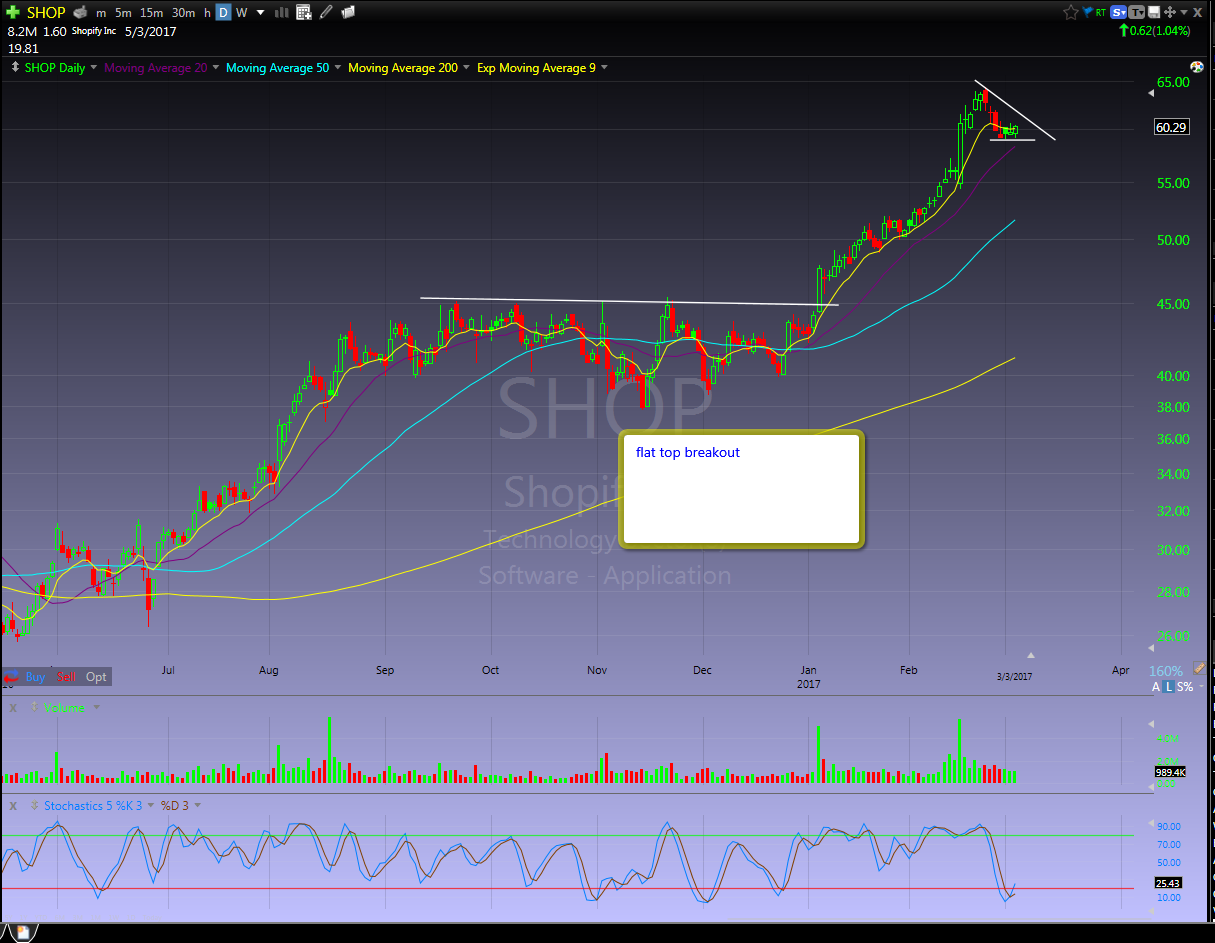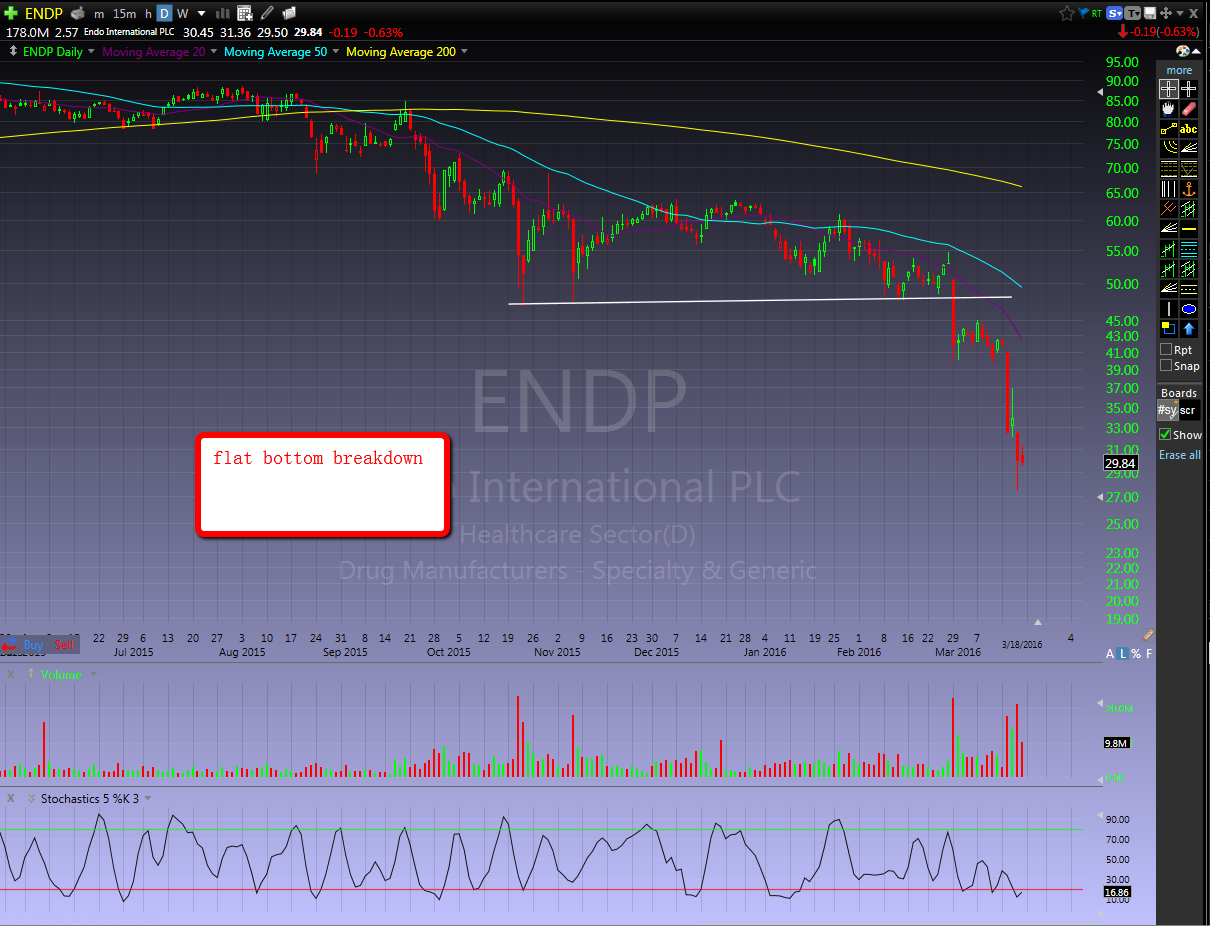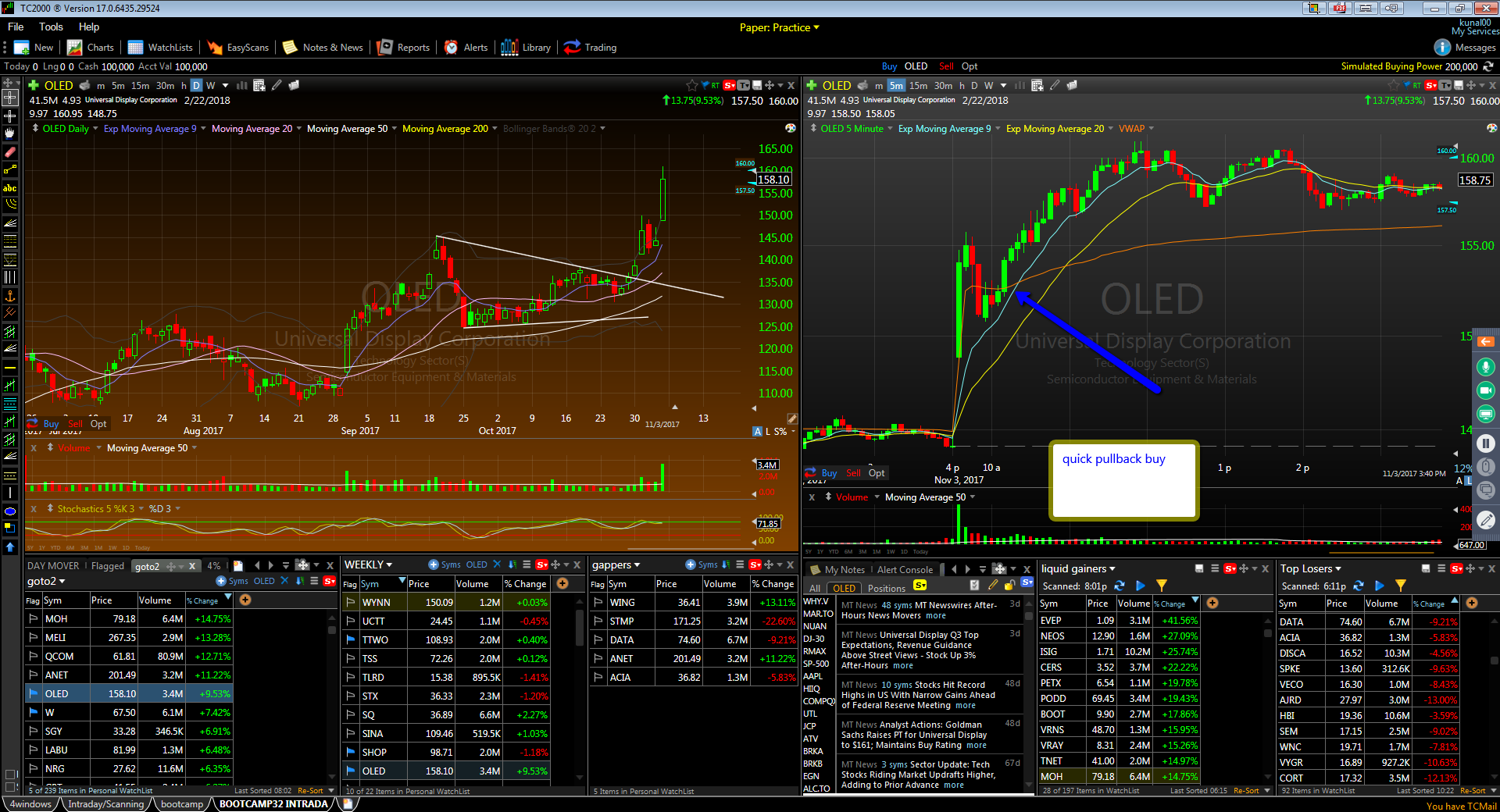Momentum stocks can grow your trading account exponentially if you know how to manage risk, find good entries, and stick to your trading plan. New and inexperienced traders have to be especially careful because they can destroy there account as quickly as it can grow. Here are some of the best strategies and tips you can use to maximize your profits on these stocks.
Daily Chart Breakouts

Daily chart breakouts are a great daily context to play for momentum plays. The bias is obvious, it is easy to define your risk, and there is usually great risk versus reward. For newer traders, it is easier for most to play setups that are joining an existing trend. You want to look for long periods of consolidation before playing a breakout, like we see with SHOP above. The longer a stock is trading within a range, the more powerful the move will be when it breaks major resistance or support.
Daily Chart Breakdowns

Daily chart breakdowns is the same concept as playing a breakout, except its to the downside. You are looking for breakdowns of daily support for momentum to the downside. We see how ENDP had a great breakdown under 48ish. It had been consolidating in that $48-$60 range for almost 4 months, which is exactly what you want to see for a breakdown play.
Intraday Pullbacks

Momentum stocks do not go straight up forever. It is easy to get FOMO (fear of missing out) when you see a stock making a big move without you, so remember you will almost certainly get a pullback at some point. Use moving averages and price support/resistance to help you manage your risk. The 20 MA is a good indicator of the short term trend, the 50 for the intermediate, and the 200 for the long term trend. Intraday we look at the 9 EMA, 20 EMA, and VWAP.
Breakouts of Long Periods of Consolidation Intraday
Stocks get their power and explosiveness from long periods of consolidation in a tight range. Waiting for a stock to pull back and consolidate for several minutes or more will give you better risk versus reward for your trades. Once the stock breaks out of this range it will usually have some great follow through.
Criteria For A Momentum Stock:
- History of Making Big Moves: A momentum stock is almost always a stock that has made big moves in the past. You want to see on the daily chart a history of following through and holding gains. You don’t want to be involved with stocks that have no range.
- Clean Daily Chart: The daily chart of the stock should not have any areas of resistance to the left if you’re looking long, and no support if you’re looking short.
- Liquidity: You do not want to be looking for momentum in illiquid stocks. You will usually get very little follow through, and will get a ton of slippage on your exits.
- Strong Catalyst: Most momentum stocks are usually moving because of a fundamental catalyst. The best catalyst is a quarterly earnings report, but other catalysts such as FDA approvals and analyst upgrades can also get stocks moving.
Best Times of Day For Momentum
The best time of day to play momentum stocks are the first hour 9:30-10:30. During this time all the patterns will tend to resolve the best and have follow through. After 10:30 the volume dies down a lot and stocks become a lot more choppy. A midday news catalyst will usually bring some volume back into a stock, and give some range and patterns to play off of.
3 Crucial Day Trading Rules
Align Your Setups On Multiple Time Frames
You want to always make sure a daily breakout is accompanied with an intraday breakout to maximize your probability of your trade following through. The daily of the stock will tell you what the macro trend is, and the intraday will tell you the micro trend. It is sometimes useful to look at a weekly or monthly chart to get an even bigger picture idea of the trend. The more time frames you can find a breakout or breakdown the better.
Never Chase Weakness Or Strength
Momentum stocks are usually moving 5%, 10%, or even more in a space of hours. They have very large intraday ranges, and it is easy to get underwater fast if you are chasing these stocks blindly. How far a stock is trading from its moving averages is an easy way to tell if its extended or not. If it’s trading far away from its moving averages, it is considered extended. If it’s trading on or near them, it is considered to have pulled back. It is best to wait for momentum stocks to pullback and consolidate by their moving averages or price support/resistance for a bit before entering for the next push.
Know Your Stocks’ Float, Sector, and Catalyst
You don’t need to sift through every single SEC filing in the past month of the stocks you day trade. You should always be aware of these fundamental characteristics:
- A stock’s float will tell you it’s potential for an explosive move. A low float stock (100 million shares or below) is more likely to make a big move than a stock with a larger float.
- Stocks in certain sectors are not good for day trading, while other sectors are perfect for it. Retail stocks for example are usually slow moving and don’t have much range. Biotech stocks in contrast tend to have large ranges and make explosive moves.
- You should always know why a stock is gapping up or down before the market opens. Some catalysts will not create any momentum. For example a buyout may result in a gap up, but the stock may just trade flat for the whole day. If a stock gaps on earnings, that will likely provide some good momentum and range to profit it from that day.
Get Started With Our Free Trading Kit
Our trading kit is the best free resource out there for new and struggling traders. It includes
- Intro to Trading Course
- Comprehensive Trading Handbook
- Trading Consultation




